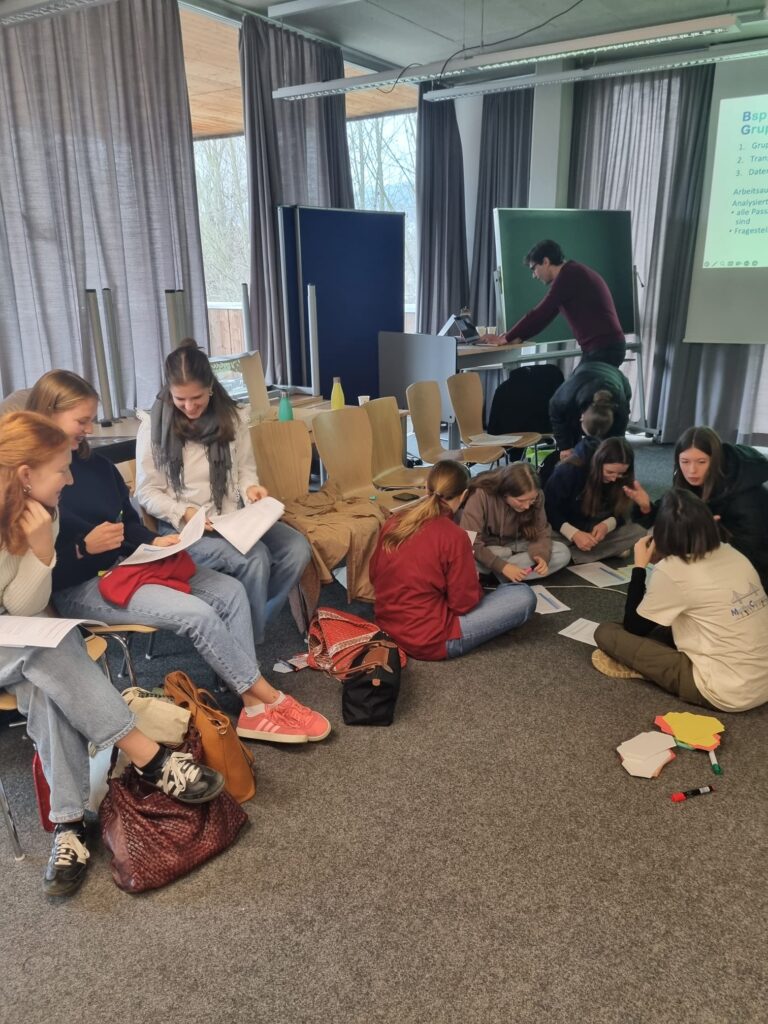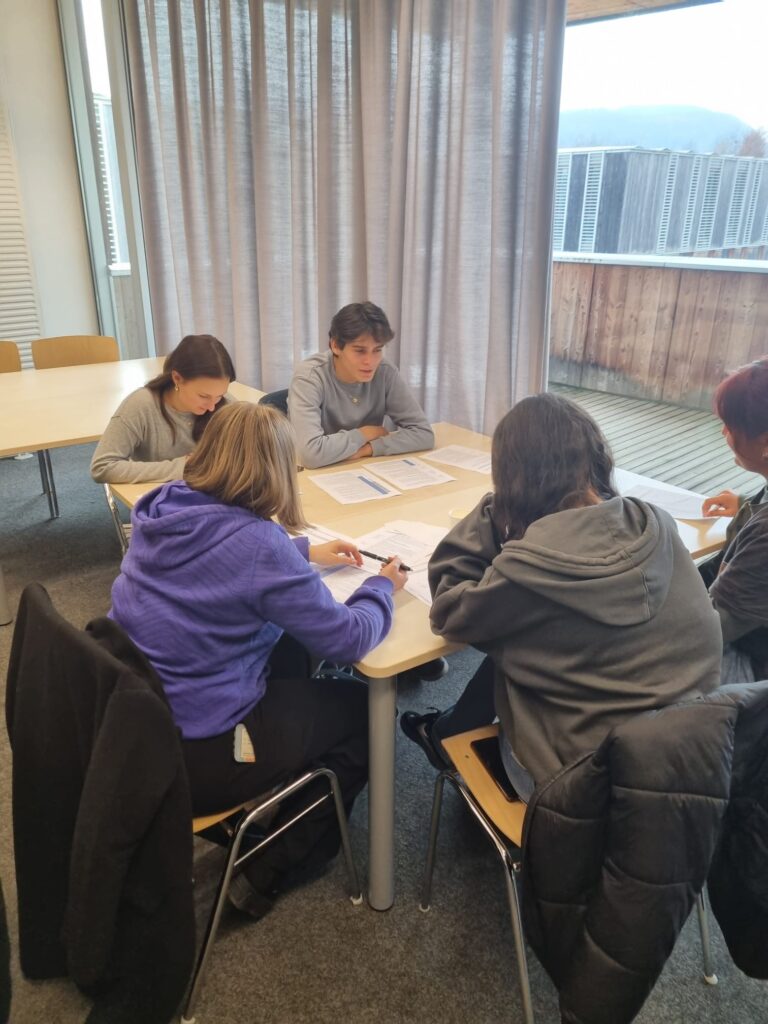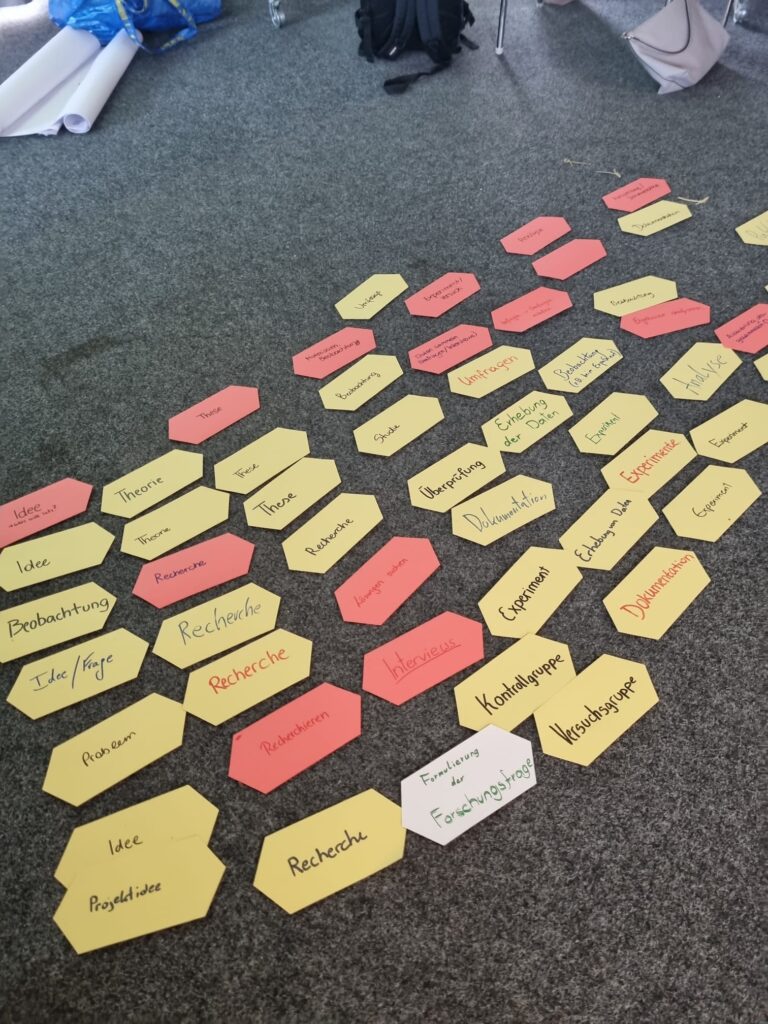On December 6, our methods workshop took place as part of the MatheConnect project - this time directly at the university. The aim was to familiarize the students with the essential steps of a research process and to actively involve them in the design and implementation of their own research work.
Research process - An introduction
At the beginning of the workshop, we talked about how visual stimuli - such as images - can help to identify socially relevant topics. This served as inspiration to raise awareness of the link between research and everyday life. The students were then given an overview of the key steps of a research process. We reflected that we had already successfully completed some stages in our project - such as formulating a research interest, researching the literature and developing research questions. The focus was now on understanding the next steps:
- Selection and creation of the survey instrument
- Implementation of data collection and
- Evaluation of the collected data
Practical insights: Students get to know methods
In order to make the theory of the various survey instruments tangible, the students tested methods such as classic questionnaires or comparative judgment.
- Questionnaires: We discussed the structure, questions and possible response scales in order to obtain valid results.
- Comparative Judgement: An exciting method in which comparisons are made between different works or solutions in order to assess their quality.
The students also received a transcript of a group discussion from a previous project phase. Using the content analysis method, they examined the statements and categorized them in terms of content. In doing so, they gained their first insights into qualitative data analysis and its requirements.
Creative phase: Develop your own survey instruments
After the practical exercises, things got creative: in small groups, the students collected their own ideas on which survey tools they could use for their research. Suggestions included traditional surveys and the use of social media tools, as well as examples such as various scenarios that would trigger participants to think about certain topics.
Teamwork and further steps
In order to better coordinate further tasks, the students have divided themselves into teams. From now on, each group will take responsibility for a specific part of the research process - from the development of the survey instrument to the subsequent data analysis.
The students are now starting to work independently, with the support of our team. We look forward to seeing the first results and making further progress in the research work together!
A successful final
To round off the intensive and productive day, we went out for pizza together. This was not only a well-earned refreshment, but also an opportunity to chat about our initial impressions and ideas in a relaxed atmosphere.



